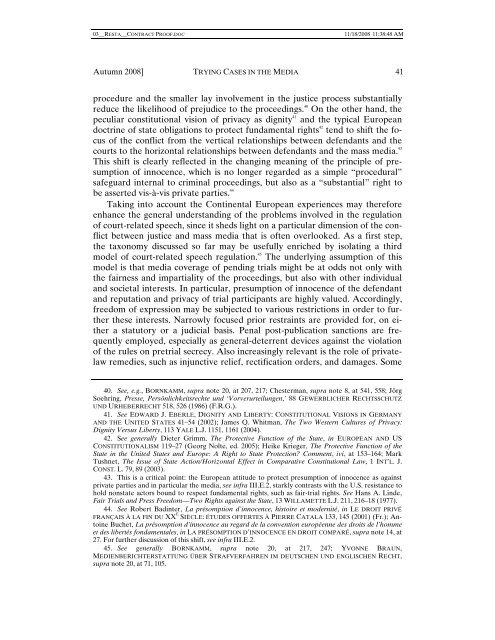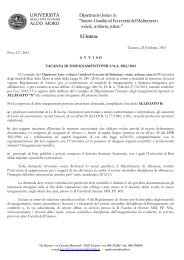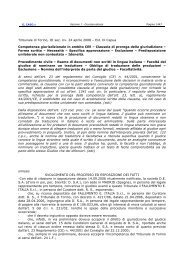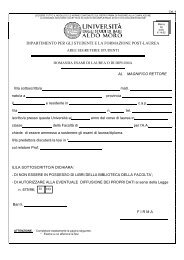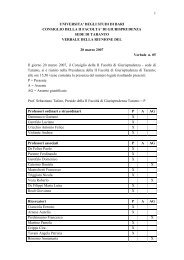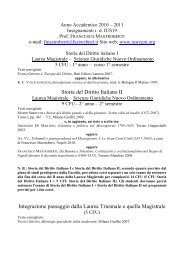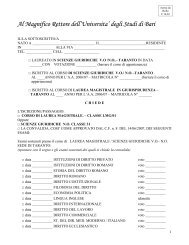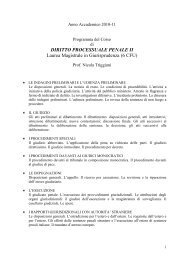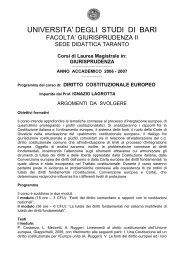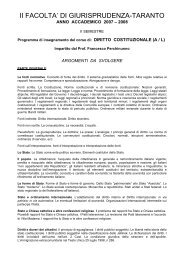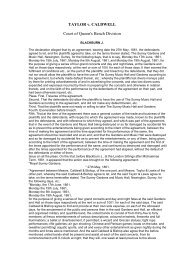TRYING CASES IN THE MEDIA: A COMPARATIVE OVERVIEW
TRYING CASES IN THE MEDIA: A COMPARATIVE OVERVIEW
TRYING CASES IN THE MEDIA: A COMPARATIVE OVERVIEW
You also want an ePaper? Increase the reach of your titles
YUMPU automatically turns print PDFs into web optimized ePapers that Google loves.
03__RESTA__CONTRACT PROOF.DOC11/18/2008 11:38:48 AMAutumn 2008] <strong>TRY<strong>IN</strong>G</strong> <strong>CASES</strong> <strong>IN</strong> <strong>THE</strong> <strong>MEDIA</strong> 41procedure and the smaller lay involvement in the justice process substantiallyreduce the likelihood of prejudice to the proceedings. 40 On the other hand, thepeculiar constitutional vision of privacy as dignity 41and the typical Europeandoctrine of state obligations to protect fundamental rights 42 tend to shift the focusof the conflict from the vertical relationships between defendants and thecourts to the horizontal relationships between defendants and the mass media. 43This shift is clearly reflected in the changing meaning of the principle of presumptionof innocence, which is no longer regarded as a simple “procedural”safeguard internal to criminal proceedings, but also as a “substantial” right tobe asserted vis-à-vis private parties. 44Taking into account the Continental European experiences may thereforeenhance the general understanding of the problems involved in the regulationof court-related speech, since it sheds light on a particular dimension of the conflictbetween justice and mass media that is often overlooked. As a first step,the taxonomy discussed so far may be usefully enriched by isolating a thirdmodel of court-related speech regulation. 45The underlying assumption of thismodel is that media coverage of pending trials might be at odds not only withthe fairness and impartiality of the proceedings, but also with other individualand societal interests. In particular, presumption of innocence of the defendantand reputation and privacy of trial participants are highly valued. Accordingly,freedom of expression may be subjected to various restrictions in order to furtherthese interests. Narrowly focused prior restraints are provided for, on eithera statutory or a judicial basis. Penal post-publication sanctions are frequentlyemployed, especially as general-deterrent devices against the violationof the rules on pretrial secrecy. Also increasingly relevant is the role of privatelawremedies, such as injunctive relief, rectification orders, and damages. Some40. See, e.g., BORNKAMM, supra note 20, at 207, 217; Chesterman, supra note 8, at 541, 558; JörgSoehring, Presse, Persönlichkeitsrechte und ‘Vorverurteilungen,’ 88 GEWERBLICHER RECHTSSCHUTZUND URHEBERRECHT 518, 526 (1986) (F.R.G.).41. See EDWARD J. EBERLE, DIGNITY AND LIBERTY: CONSTITUTIONAL VISIONS <strong>IN</strong> GERMANYAND <strong>THE</strong> UNITED STATES 41–54 (2002); James Q. Whitman, The Two Western Cultures of Privacy:Dignity Versus Liberty, 113 YALE L.J. 1151, 1161 (2004).42. See generally Dieter Grimm, The Protective Function of the State, in EUROPEAN AND USCONSTITUTIONALISM 119–27 (Georg Nolte, ed. 2005); Heike Krieger, The Protective Function of theState in the United States and Europe: A Right to State Protection? Comment, ivi, at 153–164; MarkTushnet, The Issue of State Action/Horizontal Effect in Comparative Constitutional Law, 1 <strong>IN</strong>T’L. J.CONST. L. 79, 89 (2003).43. This is a critical point: the European attitude to protect presumption of innocence as againstprivate parties and in particular the media, see infra III.E.2, starkly contrasts with the U.S. resistance tohold nonstate actors bound to respect fundamental rights, such as fair-trial rights. See Hans A. Linde,Fair Trials and Press Freedom—Two Rights against the State, 13 WILLAMETTE L.J. 211, 216–18 (1977).44. See Robert Badinter, La présomption d’innocence, histoire et modernité, in LE DROIT PRIVÉFRANÇAIS À LA F<strong>IN</strong> DU XX È SIÈCLE: ÉTUDES OFFERTES À PIERRE CATALA 133, 145 (2001) (Fr.); AntoineBuchet, La présomption d’innocence au regard de la convention européenne des droits de l’hommeet des libertés fondamentales, in LA PRÉSOMPTION D’<strong>IN</strong>NOCENCE EN DROIT COMPARÉ, supra note 14, at27. For further discussion of this shift, see infra III.E.2.45. See generally BORNKAMM, supra note 20, at 217, 247; YVONNE BRAUN,MEDIENBERICHTERSTATTUNG ÜBER STRAFVERFAHREN IM DEUTSCHEN UND ENGLISCHEN RECHT,supra note 20, at 71, 105.


